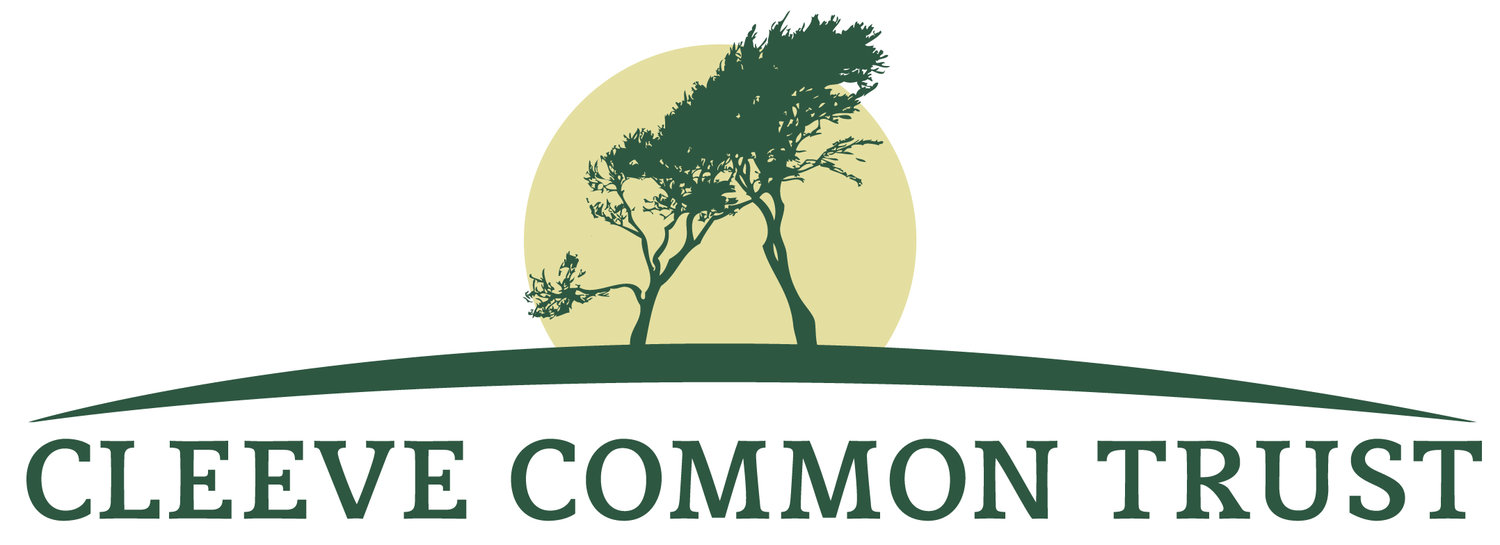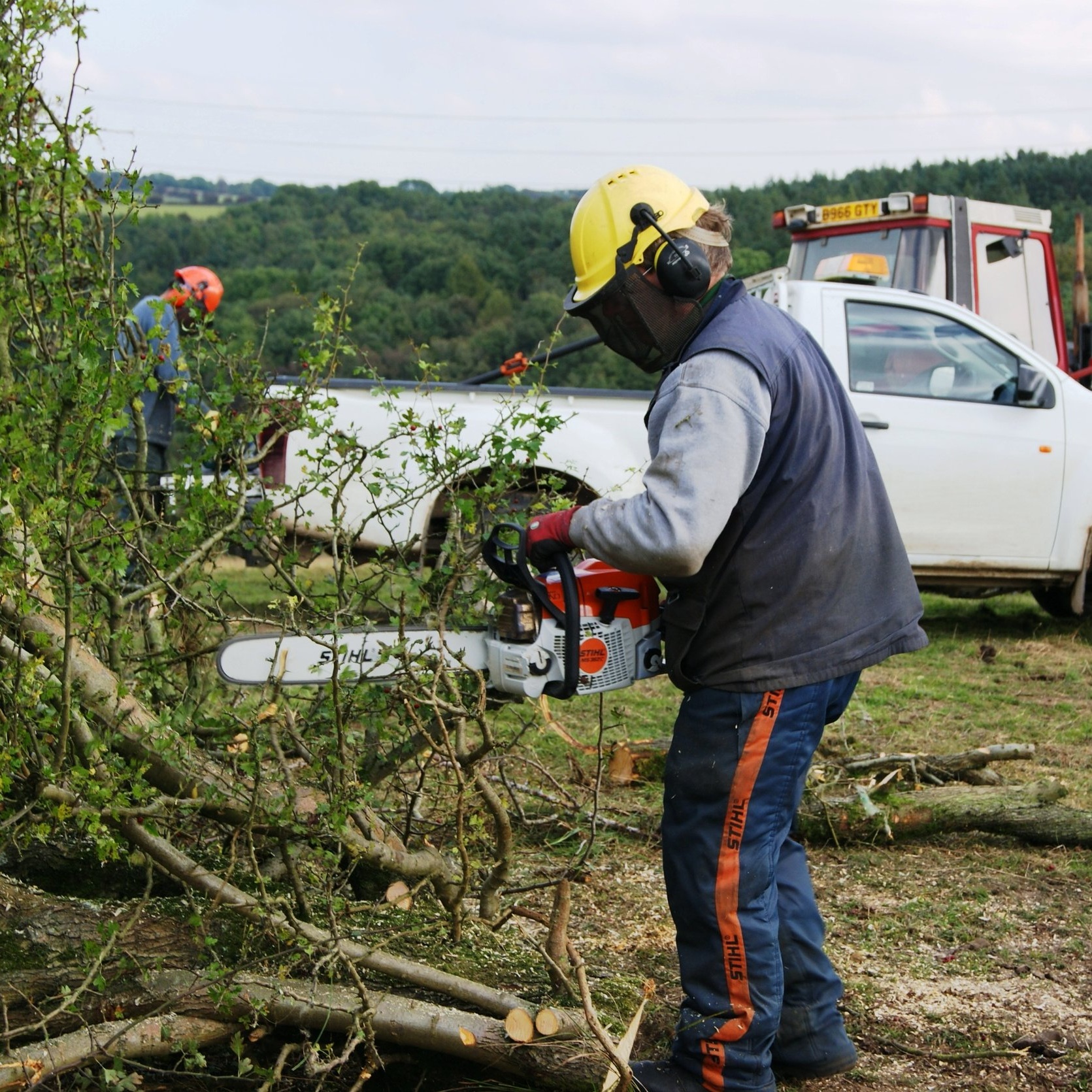
Our Work
What do we do?
Winter Trees. Image Credit Becky Meadows
What does it take to run a common?
The answer is ‘a lot of hard work’: the Common certainly doesn’t look after itself. There are cattle to care for year round, sheep to check in summer, surveys of habitats and wildlife to carry out, gorse to cut back, litter to pick up, walls, fences and gates to mend, woodland to maintain… the list of tasks is endless.
On top of all that is liaison with the many visitors to the Common – and, more often than you might imagine, rescuing those who are lost or injured.
But that is only what happens on the Common itself. Behind the scenes, there are the phones, emails and post to answer, the website and social media to keep up to date, fundraising and finances to manage, official paperwork to ensure compliance with nature conservation and farming regulations, meetings to arrange.... and plenty more.
These pages tell you more about who does what, the management of cattle and sheep, and below, our conservation work, ranger work and learning programme.
Conservation Work
Scrub clearance work on Cleeve Common
We carry out a diverse range of conservation work to maintain and improve the Common. The work is agreed in advance by Natural England through our Countryside Stewardship Agreement, which provides funding to manage the land for conservation.
Habitat Monitoring
We conduct regular surveys of plants, invertebrates, reptiles, birds and mammals to record and map the flora and fauna of the Common. We need this not only to record what is there, so we know how to look after it, but also to assess the effectiveness of conservation work.
Grassland Management
The quality of the grassland is mostly managed through grazing with our cattle and local farmers and commoners’ sheep. The grazing prevents the build-up of a thatch of old grass which would smother the more delicate wildflowers that we are trying to maintain.
To some extent the grazing helps to limit the encroachment of scrub, however, occasionally we carry out ‘topping’ to stem the spread of gorse and thistles. Topping is a process by which a mower is used to ‘top’, or remove, the aerial part of a crop, to prevent seed formation and distribution onto the soil.
Scrub Management
We cut back gorse and other scrub to maintain a mix of ages, densities and heights. The aim is to produce a patchwork of grassland and scrub. All scrub clearance takes place outside the bird nesting season, so it is mostly a winter job.
Heathland Management
Acidic soils are not commonly found in the limestone-dominated Cotswolds. Outcrops of acidic Harford Sands on Cleeve Common are perfect for heather and other acid-loving plants like heath bedstraw, tormentil and some rare bryophytes. Management is tricky as the areas are small but efforts to maintain and enhance the heather areas continue.
Woodland Management
The Trust also looks after some small areas of woodland on the fringes of the Common. Unfortunately, ash dieback is affecting these woods, though there are no plans to remove affected trees. The standing dead wood will at least provide great habitat for invertebrates, woodpeckers and fungi.
Special Conservation Projects
As well as our habitat management we carry out some species conservation projects. Click on the links below to find out more.
Ranger Work
Out to find the cattle in the snow. Image credit Ken Leech.
Livestock checks
The herd of Galloway cattle on Cleeve Common belong to Cleeve Common Trust and as a result we check them twice a day, offering additional hay feed in the winter months for breakfast. Sheep are on the hill from April to November and are the responsibility of the owners, mainly local farmers. However we help farmers by watching the stock and reporting any welfare issues. Unfortunately a lot of our time is taken up with sheep injured by dog attacks.
Looking after the public
The ranger team are the on the ground eyes and ears, so do a lot of work both behind the scenes and public facing to make sure the common is in tip top condition and everyone visiting is able to enjoy it. This can include working with dog owners to keep dogs under control, checking for hacking and professional dog walking licences and ensuring bylaws are not being broken.
Quarry car park is opened and closed each day by the rangers. They also do visual checks of the site when out and about and often get called to help lost and injured visitors.
Boundaries and field furniture
We have over 10 miles (17km) of boundary and have to ensure that the entire length is stock-proof to prevent sheep and cattle escaping. The whole boundary is inspected and repaired where necessary before sheep are turned out at the start of the grazing season in late April. Major tasks, such as rebuilding stone walls, are usually completed in the winter months. Regrettably repairs are all too often needed as a result of vandalism to gates, fences or walls.
Tracks and paths
Maintenance is needed to repair damage due to the weather, especially in the car parks where pot holes frequently develop. We make repairs using recycled spoil from geological digs, thus avoiding importing any ‘foreign’ material.
Ancient monuments
Occasional work is needed to preserve our Scheduled Monuments, for example, scrub clearance of ‘The Ring’ and regeneration of grass at the Iron Age Hillfort.
Ponds
Over time the pond at the Washpool becomes silted up, so occasional dredging is needed. The dewpond generally looks after itself, but the fencing around it requires some maintenance. We have also just restored another pond close to the Rising Sun Hotel (behind nos. 1 and 2 Cleeve Hill).
Vehicles and equipment
Not surprisingly, we need a tractor and various items of farm machinery to carry out conservation work; this all has to be looked after. We also have the Ranger pickup and an off-road buggy.
And finally....
Clearing up litter, fly-tipping & dog waste
An unpleasant and time-consuming task, taking time that would be better spent on conservation work. Apart from the unsightly nature of litter, it can pose health hazards, cause death or injury to livestock and damage plant life by changing the chemical composition of the ground resulting in a change of species. A major concern is dog mess, especially when put in plastic bags and then discarded on the Common. We have a simple message to dog owners: “bag it & bin it!”
Learning
Learning how to read a map on Cleeve Common
Events & Guided Walks
We have an expanding programme of events to raise awareness of Cleeve Common, what makes it such a special place and how we can conserve it for the future. For current events planned, visit our What’s On page.
Formal learning programme
Cleeve Common is a brilliant place to visit with students of all ages. It is a great example of farming with conservation and the environment in mind. There are opportunities to study science, geography, history and ecology. It also offers a great space for enrichment activities.
Through our Countryside Stewardship agreement, we can offer free half-day visits for groups from KS1 to GCSE who would like to study the links between farming, conservation and food production. EYFS groups are welcome too, but please contact us for more details as our lack of facilities and the size of the common can make a visit trickier for younger children.
There are also many opportunities for self-guided visits which are also free, or other programs of study for which there is a small per-pupil fee.
Talks
We can on occasion, for a reasonable donation, provide a speaker to talk to local groups who have a strong interest in Cleeve Common (and we have some wonderful pictures!).
For more information on all of these aspects of our work, head to our Learning pages.
Recreation
Enjoying a dog walk on Cleeve Common. Image Credit Georgina Pugh
Bylaws
Cleeve common Trust, formally known as Cleeve Common Board of Conservators was established by an Act of Parliament in 1890 and given powers to make Bylaws and regulate what activities may take place on the Common.
We are currently looking to update the bylaws which have not been edited since 1981, you can view our current bylaws here.
Head to our visiting tab for more detail on all the things you can do here.





